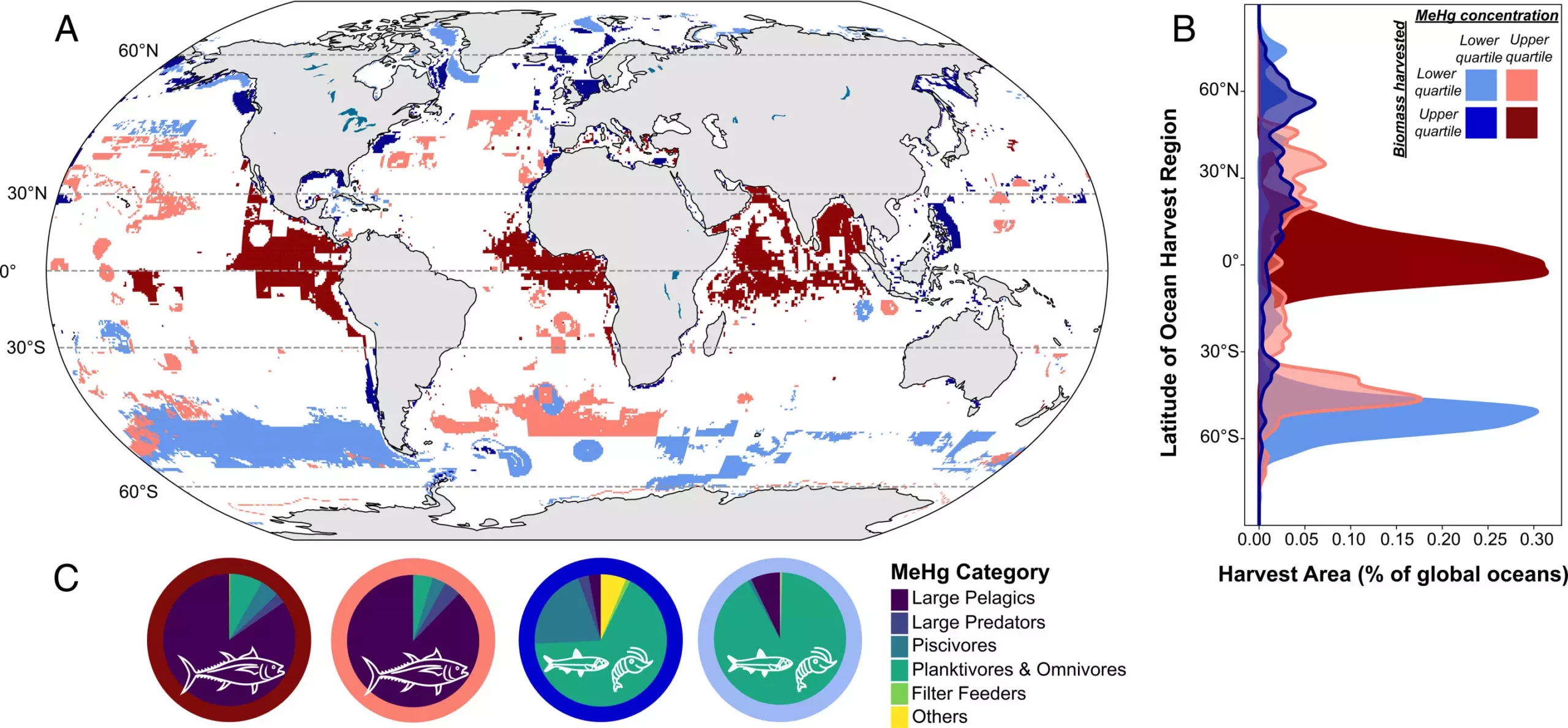The emerging awareness surrounding the dangers of industrial fishing practices has highlighted a significant concern—human exposure to methylmercury. This neurotoxin, which poses serious risks to individual health, is notably pervasive in larger fish species, such as tuna, commonly harvested from tropical and subtropical waters. Recent findings from a collaborative study involving the Harvard John A. Paulson School of Engineering and Applied Sciences, along with prominent universities such as the University of Delaware and the University of British Columbia, reveal that these industrial fisheries account for a staggering 70% of the methylmercury found in global fish catches. The situation is grave, as methylmercury is linked to developmental delays in children and cardiovascular issues in adults.
Mercury enters the environment primarily from anthropogenic sources like coal-fired power plants, industrial processes, and waste incineration. Once released, it traverses through the atmosphere, eventually settling in oceans and lands where it is converted into methylmercury by certain microorganisms. This process is particularly pronounced in warmer climates, producing high concentrations of this toxic compound in marine food webs.
The recent uptick in seafood consumption, particularly among larger pelagic species like tuna, is a contributing factor to the rising health risks associated with methylmercury. Technological advancements in fishing methods, especially those that involve onboard freezing and fish aggregation, have further empowered industrial fishing practices. Since the 1980s, these enhancements have led to an unprecedented rise in tuna fisheries, pushing these fish to become staple components in many diets across the globe. Unfortunately, with this increased availability comes a higher risk; larger fish generally accumulate more methylmercury compared to their smaller counterparts.
The interplay between industrial fishing practices and the seafood market illustrates a concerning trend. The growing popularity of large pelagic fish creates a higher demand for seafood that is laden with harmful methylmercury, essentially amplifying the public’s exposure to this neurotoxin. In addition, the nutritional aspects of these fish are increasingly called into question, as the levels of beneficial micronutrients—such as selenium and omega-3 fatty acids—are often significantly lower in tuna and similar species fished from warmer waters.
Given the health risks associated with methylmercury exposure, it is imperative for policymakers and consumers to reconsider their choices. As highlighted by researchers, most industrial fishing practices are concentrated on large pelagic species, which are typically found in regions with high levels of mercury methylation. This targeted fishing not only underscores the urgent need for better regulation in the industry but also stresses the importance of consumer education regarding the repercussions of their dietary choices.
Small pelagic fish, such as sardines, anchovies, and herring, emerge as healthier alternatives. Unlike their larger counterparts, these fish have lower concentrations of methylmercury while offering higher levels of omega-3 fatty acids, making them a more nutritious option for consumers. The switch to smaller fish species is not only beneficial from a health perspective but could also alleviate some of the pressures currently placed on industrial fishing practices, fostering a more sustainable approach to seafood consumption.
Addressing Challenges for Vulnerable Communities
An important aspect of this discussion involves subsistence fisheries, which are instrumental in supporting many small communities globally. While these fisheries provide essential nourishment for numerous families, research indicates that an overwhelming majority—between 84% and 99%—exceed safe methylmercury exposure thresholds. The irony is significant: these disadvantaged populations are often disproportionately affected by pollution originating from sources they have not contributed to.
This inequity underscores the need for public health initiatives aimed at these communities, especially in terms of educating them about safer fishing practices and dietary choices. Moreover, there is an urgent necessity for broader policy changes that address industrial emissions of mercury, working toward a future where public health is prioritized alongside industry growth.
While the industrial fishing sector continues to contribute to increased availability of large pelagic fish, it concurrently raises critical questions about public health. The alarming connection between methylmercury exposure and industrial fishing practices necessitates transformative changes in our fishing policies and consumer habits. It is vital to pivot towards sustainable practices that prioritize the health of both individuals and the environment, ensuring that the quest for nourishment does not come at the expense of human well-being.

